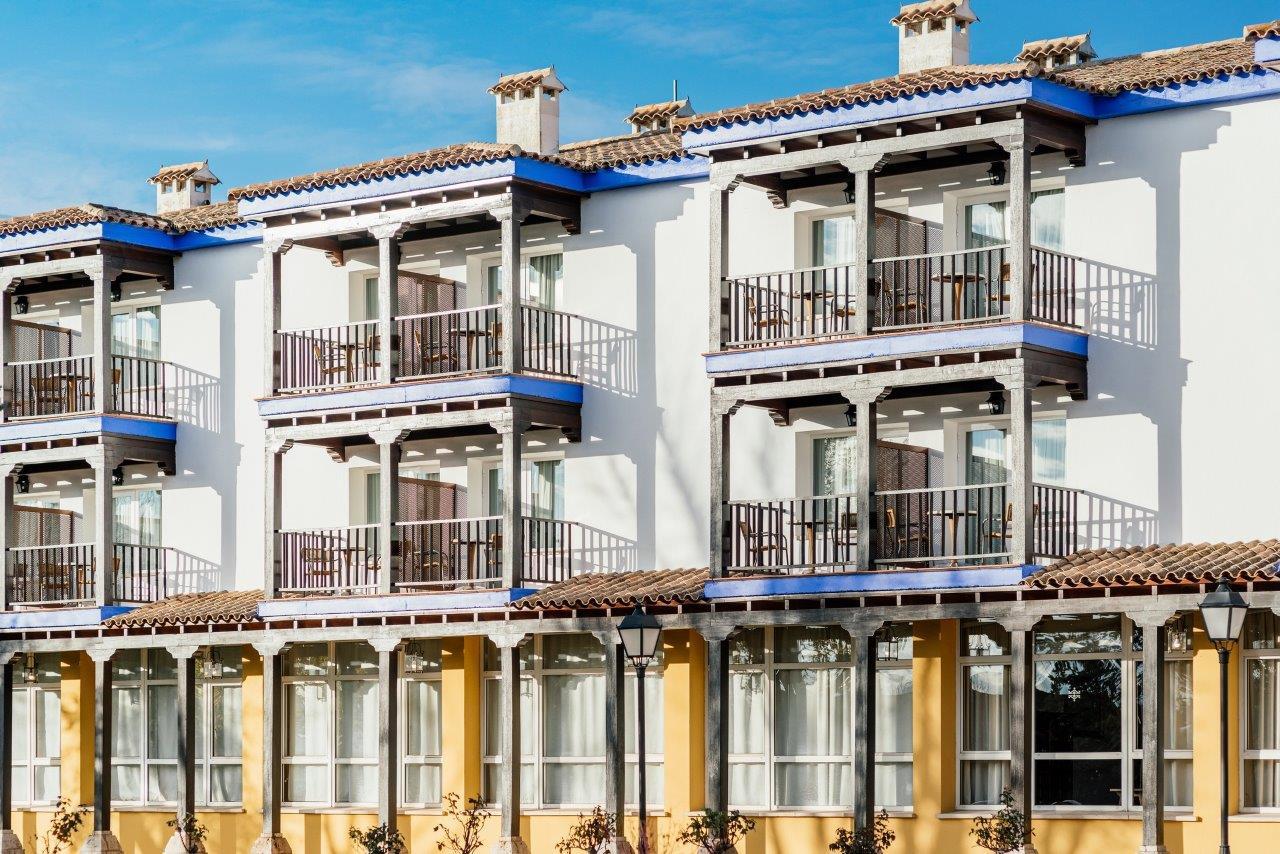Spain and Portugal: 10 incredible roads to travel on a motorcycle (biker word)
Design: The renovated Ercilla or the Bilbao hotel that everyone will talk about this spring
All national Paradores have a story to tell, hence much of their charm.
The one in Manzanares, Ciudad Real, opened its doors on March 12, 1931, that is, 90 years ago.
It was the first of a hotel network made up of
12 small and identical
accommodations located in strategic points of the "National Circuit of Special Pavement": Manzanares (Ciudad Real), Bailén (Jaén), Quintanar de la Orden (Toledo), Benicarló (Castellón) , Aranda de Duero (Burgos), Almazán (Soria), Medinaceli (Soria) La Bañeza (Léon), Triste (Huesca), Antequera (Málaga), Puebla de Sanabria (Zamora) and Puerto Lumbreras (Murcia).
Since then, the La Mancha Parador has been expanded and improved on many occasions.
Today it is a hotel that has just obtained its fourth star and that has become an obligatory stop for the rest of the trip or a starting point to visit the
Cabañeros National Park
, the
Ruidera Lagoons
and the
Tablas de Daimiel
.
It was in 1928 two young architects, Carlos Arniches and Martín Domínguez, presented their idea of a
"motorist shelter-shelter"
to the competition organized by the National Tourist Board and they won it.
The building was a standardized model, which combined the European avant-garde with the vernacular tradition, of quick and inexpensive construction, designed to serve motorists on the road of that time.
Old photograph of the hostel.
Eight rooms and gas pump
Its location had to be visible and recognizable in both directions of traffic, close to the road.
Eight-room shelters (12 places),
with a gas pump, laundry room
and other attached services for
the first motorists
to stop along the way.
The historical vicissitudes endowed them during the war with other uses such as blood hospitals and occasional barracks, as in the case of Manzanares.
Roadside shelters soon
succumbed to their own success
by quickly falling short of their demand.
The development of the layout of the road network, the evolution of tourism and the technological advance of the automobile determined the reorganization of the initial structure of the hostel network and the architectural reconfiguration of its buildings.
In the 1940s, the architects of the General Directorate of Tourism, Manuel Sainz de Vicuña and José María Muguruza Otaño, were in charge of designing the expansion of all of them in a standardized way, increasing the number and size of the rooms, providing them with independent bathrooms, areas of parking and extension of the dining room.
The current façade of the Manzanares hotel.
This would be the first expansion of the Manzanares shelter, where the service areas were reused and moved to an annex;
subsequently, two successive extensions with pavilions maintained the original concept of modern architecture, being called "parador" ever since in the 60s.
Starting in the last decade of the 20th century, the renovations masked the architectural modernity with the regional style of the
La Mancha house,
providing it with a porch and the wooden sunrooms of the so identifying rooms of the Parador de Manzanares.
Even so,
the primitive hostel is preserved at the back of the parador,
as a reminder of the past time when tourism was exclusive to a social elite who discovered the freedom of traveling by car.
Currently, the Parador de Manzanares promotes local tourism with a special offer for residents.
A rate that offers standard double rooms for one or two people from 67 per night (optional breakfast) while the current mobility restrictions continue in force.
According to the criteria of The Trust Project
Know more
tourism
Villa FavoritaThis small hotel has the best views of the bay of San Sebastián
Le Grand Contrôle The first hotel within Versailles where guests have the palace to themselves and enjoy Louis XIV banquets
Plans10 curiosities of Madrid told by city guides
See links of interest
Work calendar
Alavés - Cádiz
Sassuolo - Verona
1. FC Union Berlin - 1. FC Cologne
Real Madrid - Elche
Getafe - Atlético de Madrid

